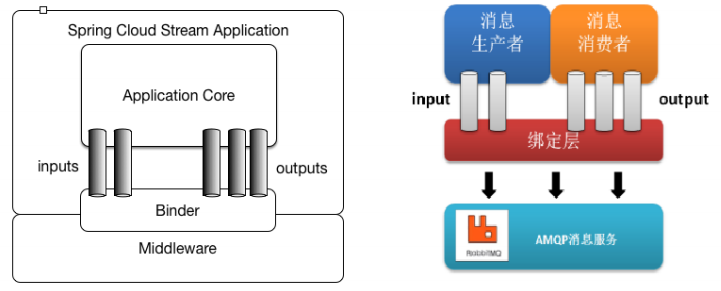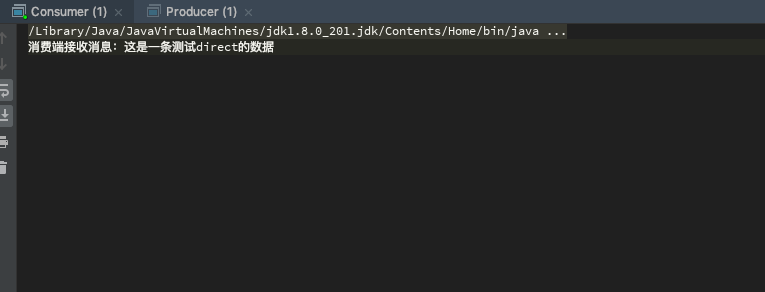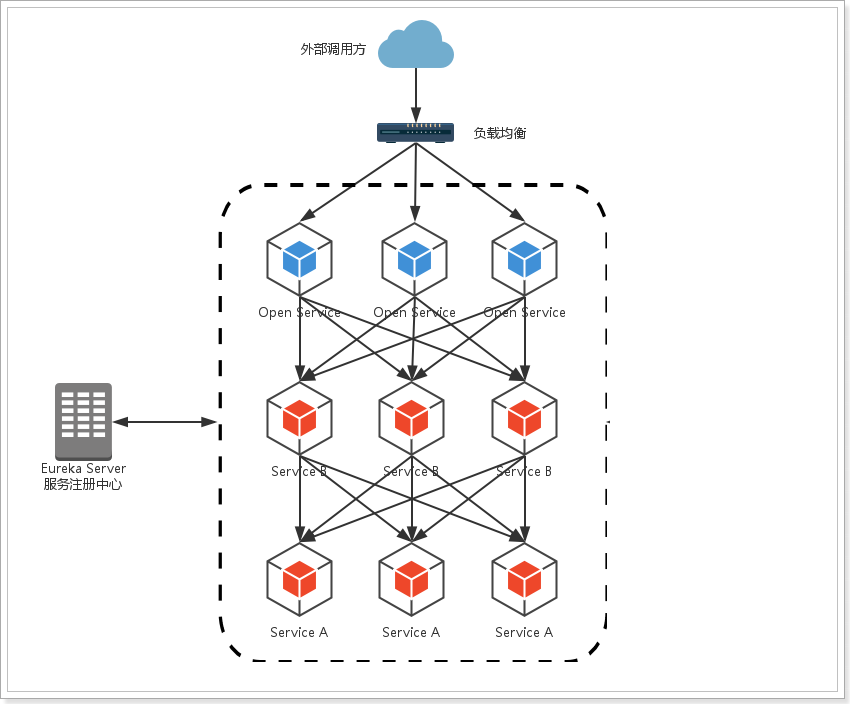【daisy-framework】事件监听(event,listener)
前言
Github:https://github.com/yihonglei/daisy-framework/tree/master/daisy-springboot-framework(daisy工程)
一 事件监听
Java很多web框架源码都能看到很多事件监听的存在,主要解决的问题就是类似观察者模式的行为,
当一件事情发生的时候,其他的相关事情需要知道并处理。
事件监听三要素: 事件源,事件对象,事件监听器。

1、监听器需要注册,即注册到某个数据结构,map或list等等存储起来;
2、一件事情的发生源头,这件事情需要触发监听器,让监听器能感受到,监听器才能去处理业务;
3、调用每一个监听器,执行相关处理;
要理解监听器,需要理解几个问题,监听器存储在什么数据结构?监听器如何被触发?监听器如何处理业务?
上一个代码吧,要不然太蒙了!
二 实例代码
demo基于spring boot环境。
1、自定义事件
Java自定义事件实现EventObject对象。
package com.jpeony.common.event;import lombok.Data;import lombok.EqualsAndHashCode;import java.util.EventObject;/*** 自定义事件** @author yihonglei*/@EqualsAndHashCode(callSuper = true)@Datapublic class DaisyEvent extends EventObject {DaisyEventEnum event;Object[] args;/*** 事件对象** @param daisyEventEnum 事件类型* @param source 触发事件初始化对象* @param args 其他参数* @author yihonglei*/public DaisyEvent(DaisyEventEnum daisyEventEnum, Object source, Object... args) {super(source);this.event = daisyEventEnum;this.args = args;}/*** 事件对象** @param daisyEventEnum 事件* @param source 触发事件初始化对象* @author yihonglei*/public DaisyEvent(DaisyEventEnum daisyEventEnum, Object source) {this(daisyEventEnum, source, null);}}
DaisyEventEnum事件类型,args事件参数。
2、定义事件类型
定义事件类型主要是对可以针对事件类型进行发布。
package com.jpeony.common.event;/*** 事件枚举** @author yihonglei*/public enum DaisyEventEnum {/*** 初始化*/INIT_EVENT,/*** 测试事件*/TEST_EVENT;}
3、事件监听器
事件监听器继承EventListener,定义事件发布的标准方法。
package com.jpeony.common.event;import java.util.EventListener;/*** 自定义事件监听,Spring的ApplicationListener也是这么干的,自定义方便自己对事件进行管理。* 注意,这里的事件是同步的,如果有需要,可以将事件提交到线程池异步化执行或者使用Spring的异步事件方式,* 它也是提交到线程池实现异步化。** @author yihonglei*/public interface DaisyEventListener extends EventListener {/*** 触发事件** @param e 相关事件*/void fire(DaisyEvent e);}
event1
package com.jpeony.core.service.event;import com.jpeony.common.event.DaisyEvent;import com.jpeony.common.event.DaisyEventEnum;import com.jpeony.common.event.DaisyEventListener;import com.jpeony.common.event.DaisyEventManager;import lombok.extern.slf4j.Slf4j;import org.springframework.stereotype.Component;/*** 实现daisyEventListener接口,在构造方法添加你的事件即可!** @author yihonglei*/@Slf4j@Componentpublic class Test1EventListener implements DaisyEventListener {public Test1EventListener() {DaisyEventManager.addListener(DaisyEventEnum.TEST_EVENT, this);}@Overridepublic void fire(DaisyEvent e) {try {String userName = (String) e.getSource();log.info("【Test1】对发布事件,事件触发,事件参数测试!userName={}", userName);} catch (Exception ex) {log.error("出异常了!", ex);}}}
event2
package com.jpeony.core.service.event;import com.jpeony.common.event.DaisyEvent;import com.jpeony.common.event.DaisyEventEnum;import com.jpeony.common.event.DaisyEventListener;import com.jpeony.common.event.DaisyEventManager;import lombok.extern.slf4j.Slf4j;import org.springframework.stereotype.Component;/*** 实现daisyEventListener接口,在构造方法添加你的事件即可!** @author yihonglei*/@Slf4j@Componentpublic class Test2EventListener implements DaisyEventListener {public Test2EventListener() {DaisyEventManager.addListener(DaisyEventEnum.TEST_EVENT, this);}@Overridepublic void fire(DaisyEvent e) {try {String userName = (String) e.getSource();log.info("【Test2】对发布事件,事件触发,事件参数测试!userName={}", userName);} catch (Exception ex) {log.error("出异常了!", ex);}}}
spring boot启动时注册到时间管理器DaisyEventManager(下面有源码)。
4、事件管理器
负责事件的注册,事件触发。
package com.jpeony.common.event;import org.slf4j.Logger;import org.slf4j.LoggerFactory;import java.util.EnumMap;import java.util.concurrent.CopyOnWriteArrayList;/*** 事件管理器** @author yihonglei*/public class DaisyEventManager {private static Logger logger = LoggerFactory.getLogger(DaisyEventManager.class);private static EnumMap<DaisyEventEnum, CopyOnWriteArrayList<DaisyEventListener>> eventListeners = new EnumMap<>(DaisyEventEnum.class);public static void addListener(DaisyEventEnum event, DaisyEventListener el) {CopyOnWriteArrayList<DaisyEventListener> listeners = eventListeners.get(event);if (listeners == null) {listeners = new CopyOnWriteArrayList<>();eventListeners.put(event, listeners);} else {for (DaisyEventListener listener : listeners) {if (listener.getClass() == el.getClass()) {logger.info("more than one instances added, this class is {}", listener.getClass());return;}}}listeners.add(el);}/*** 移出指定事件的指定监听器** @author yihonglei*/public static synchronized void removeListener(DaisyEventEnum event, DaisyEventListener el) {CopyOnWriteArrayList<DaisyEventListener> listeners = eventListeners.get(event);if (listeners != null) {listeners.remove(el);}}/*** 清除指定事件的所有监听器** @author yihonglei*/public static void purgeListeners(DaisyEventEnum event) {CopyOnWriteArrayList<DaisyEventListener> listeners = eventListeners.get(event);if (listeners != null) {listeners.clear();// 移除该事件eventListeners.remove(event);}}/*** 触发事件** @author yihonglei*/public static void fireEvent(DaisyEvent obj) {CopyOnWriteArrayList<DaisyEventListener> listeners = eventListeners.get(obj.getEvent());if (listeners == null) {return;}for (DaisyEventListener listener : listeners) {listener.fire(obj);}}}
spring boot启动的时候,Test1EventListener和Test2EventListener通过构造器的事件管理器注册到EnumMap。
DaisyEventManager.addListener(DaisyEventEnum.TEST_EVENT, this);
EnumMap是一个事件类型对应多个listener的数据结构,Map的key是事件类型,value是监听的list集合。
5、测试
package com.jpeony.test.service.event;import com.jpeony.common.event.DaisyEvent;import com.jpeony.common.event.DaisyEventEnum;import com.jpeony.common.event.DaisyEventManager;import com.jpeony.test.BaseServletTest;import org.junit.Test;/*** @author yihonglei*/public class EventTest extends BaseServletTest {@Testpublic void test() {// 事件发布,支持任意参数,可以是一个值,也可以传入对象String userName = "Tom";DaisyEventManager.fireEvent(new DaisyEvent(DaisyEventEnum.TEST_EVENT, userName));}}
发布TEST_EVENT事件,event1和event2监听并执行。

DaisyEventManager.fireEvent(new DaisyEvent(DaisyEventEnum.TEST_EVENT, userName));
传入TEST_EVENT,事件管理器根据key为TEST_EVENT取出对应的监听器列表并循环执行。

6、总结
1)监听事件继承EventObject;
2)监听器继承于EventLisneter,也可以不继承,这个接口只是一个标记接口,然后定义统一的事件发布方法;
3)弄一个事件管理器,不弄也行,我这里是为了方便,你可以在某个类里面搞一个Map或list存这些监听器,
数据结构选取可以根据自己的业务来,总之,要把这些监听器对象存起来;
4)事件执行就比较简单,就是根据事件类型取出相应的监听器,循环执行,完事!
三 Tomcat的事件监听
最近无聊看了下tomcat源码,单独简单聊下tomcat里的事件监听怎么实现的。
1、事件定义

你会发现,tomcat生命周期管理的自定义事件也只是继承了EventObject,data事件监听器处理需要的参数,
type就是事件类型。
2、监听器定义

刚才我自己实现监听器,标识接口用的Java的EventListener,这个是只是个标记接口,
表明跟我这个EventListener相关的都是要实现监听器,你别的不相关的别瞎搞,只是一个规范而已。
tomcat里面就只是自己定义了事件发布标准,监听器都走LifecycleListener接口标识。
3、监听注册
数据结构

最后都是调用add方法,把监听都放在这个list里面。
4、监听触发

这个地方也是通过type取到监听list,然后循环触发执行。
四 事件监听本质思想
1、事件自定义,继承EventObject;
2、监听器定义,要统一标识接口和发布方法;
3、监听器注册,搞一个合适的数据结构把你的监听分类存起来;
4、事件触发,根据事件类型,从数据结构取出相应监听器,循环执行;



































还没有评论,来说两句吧...